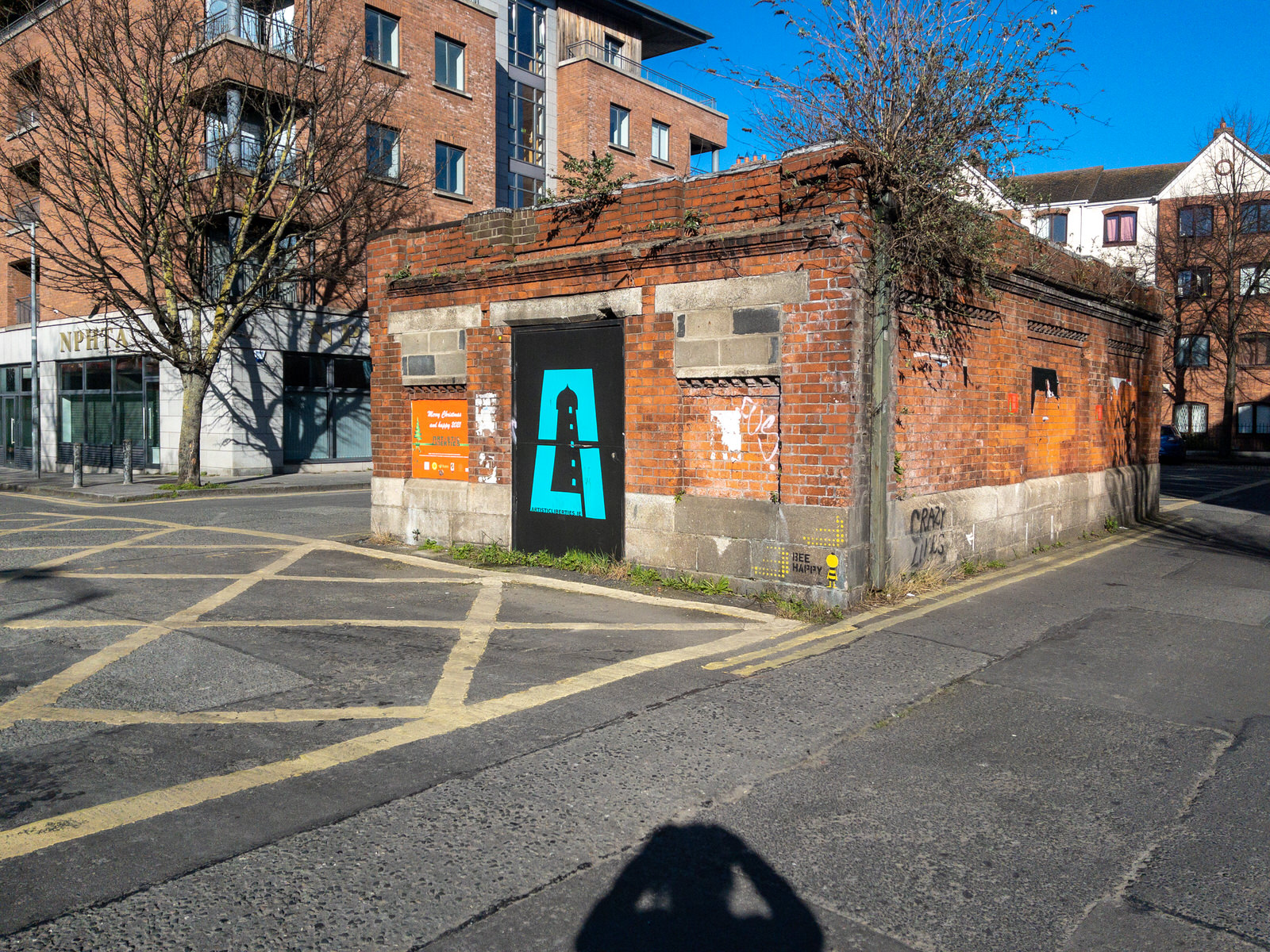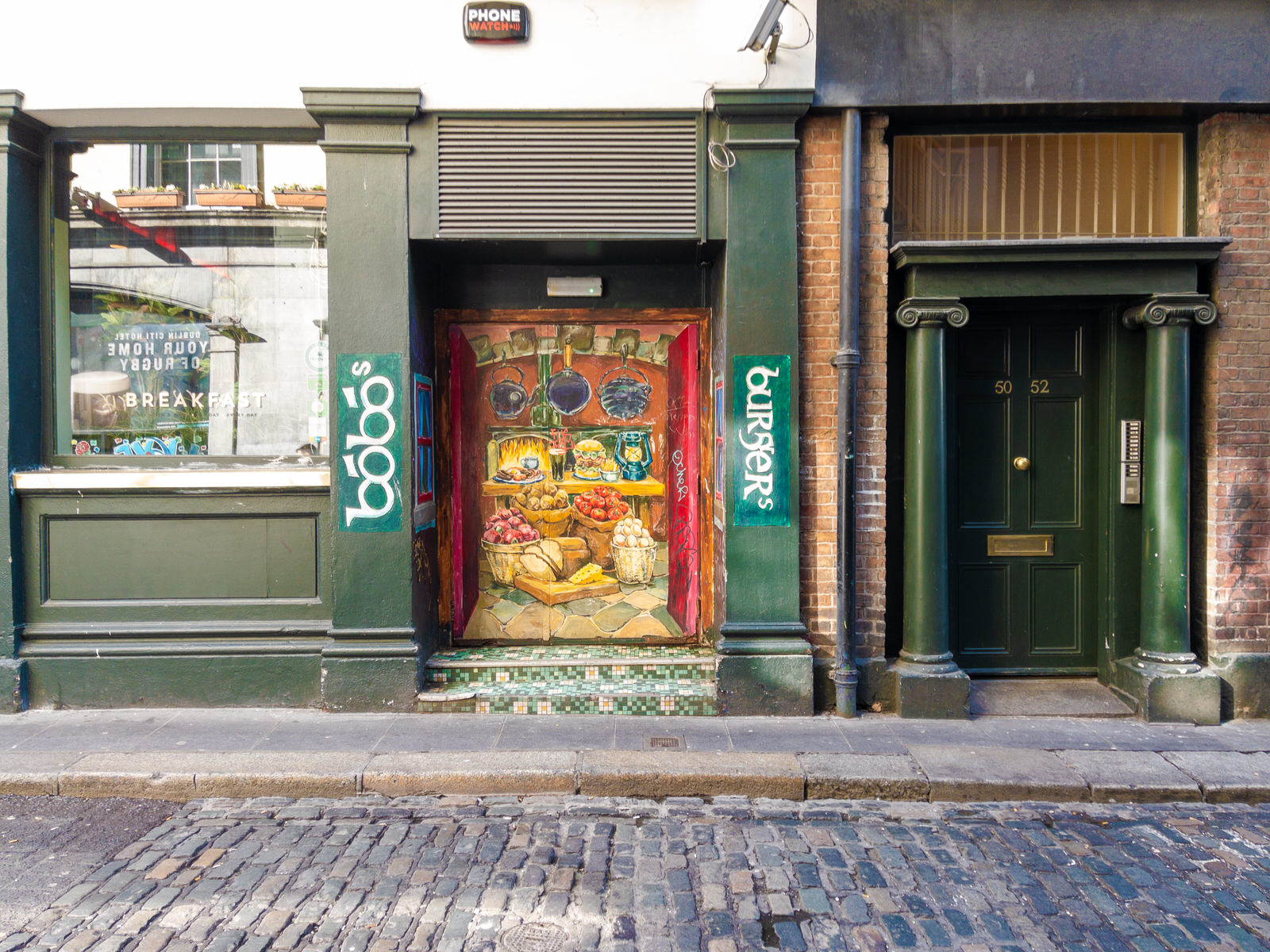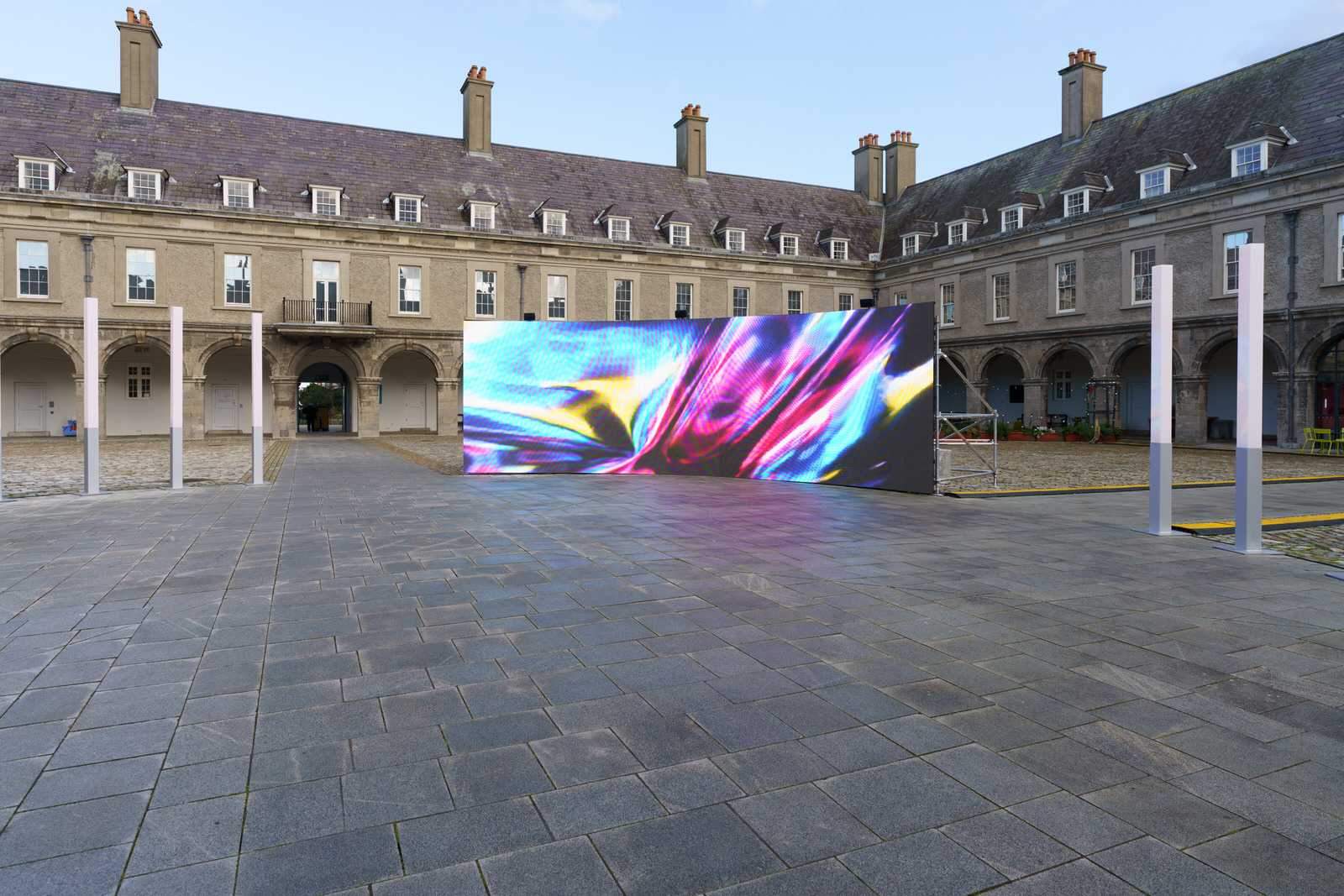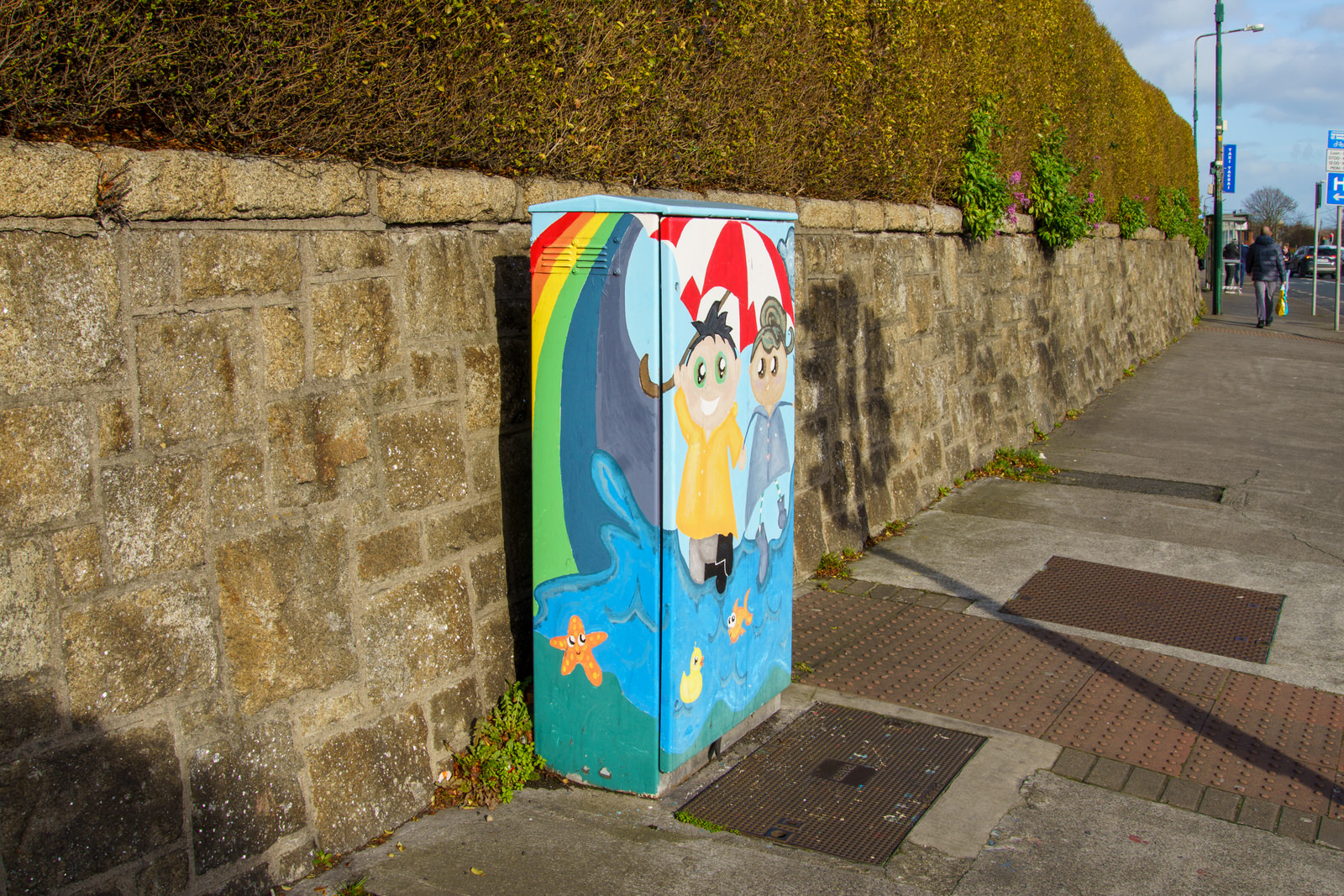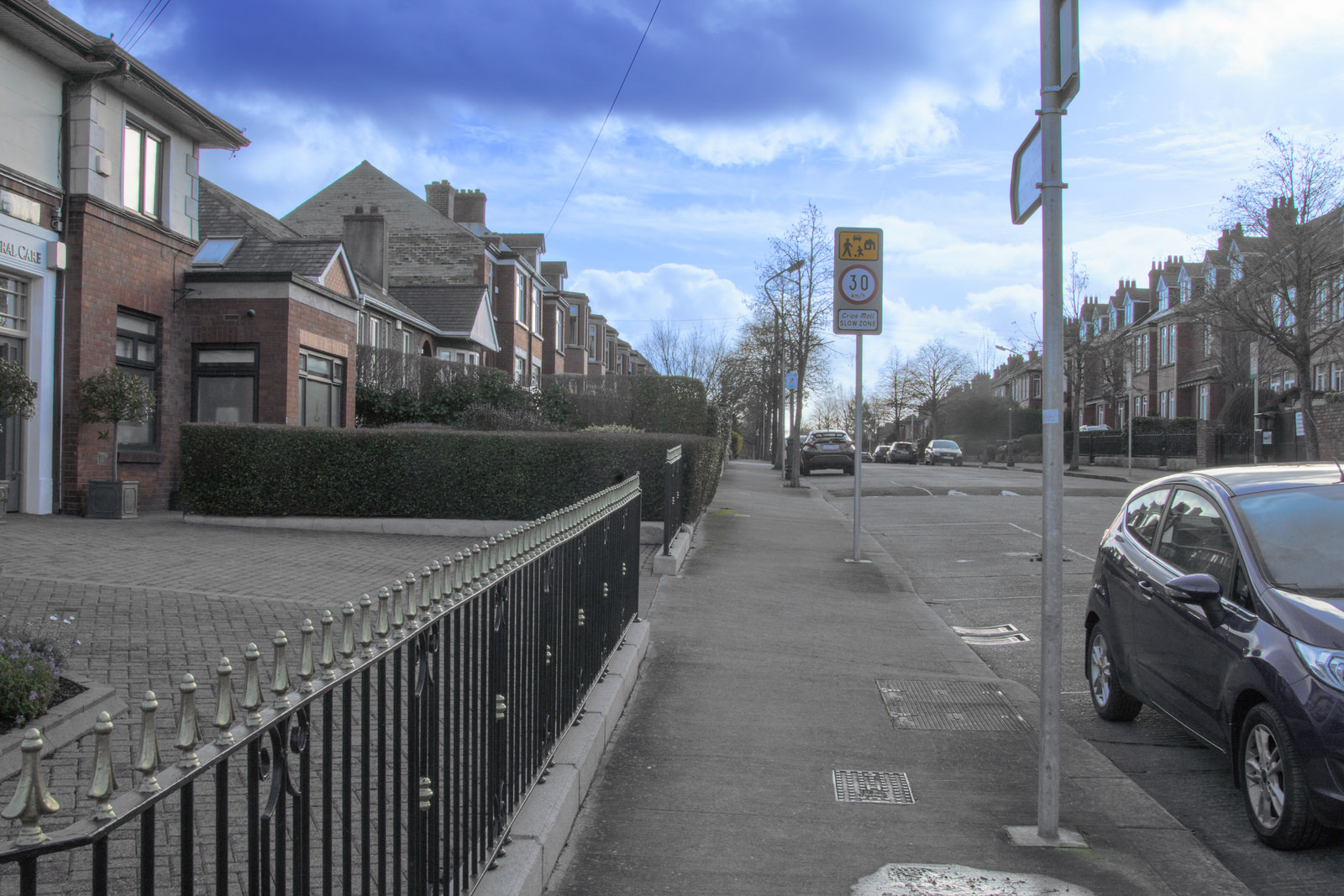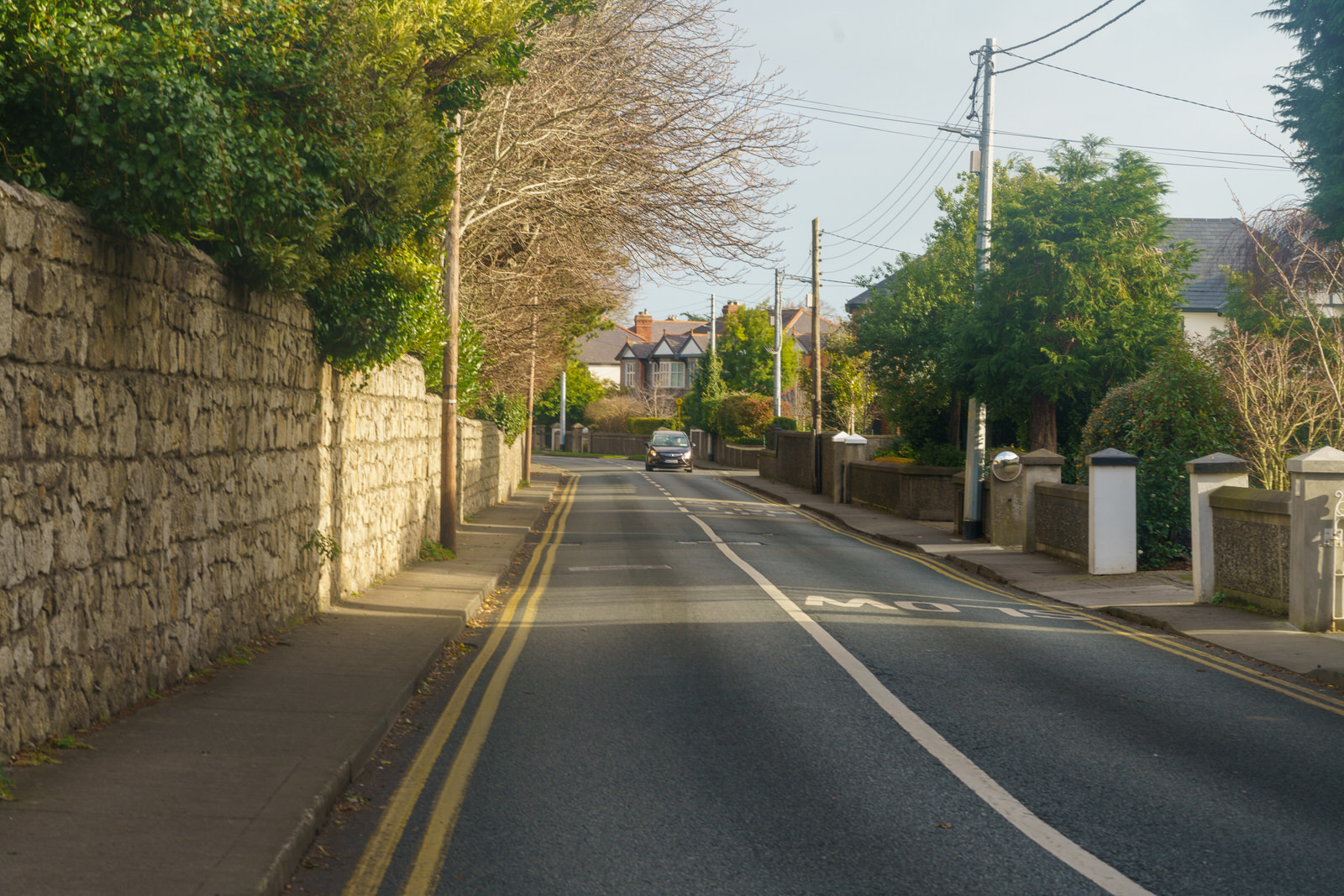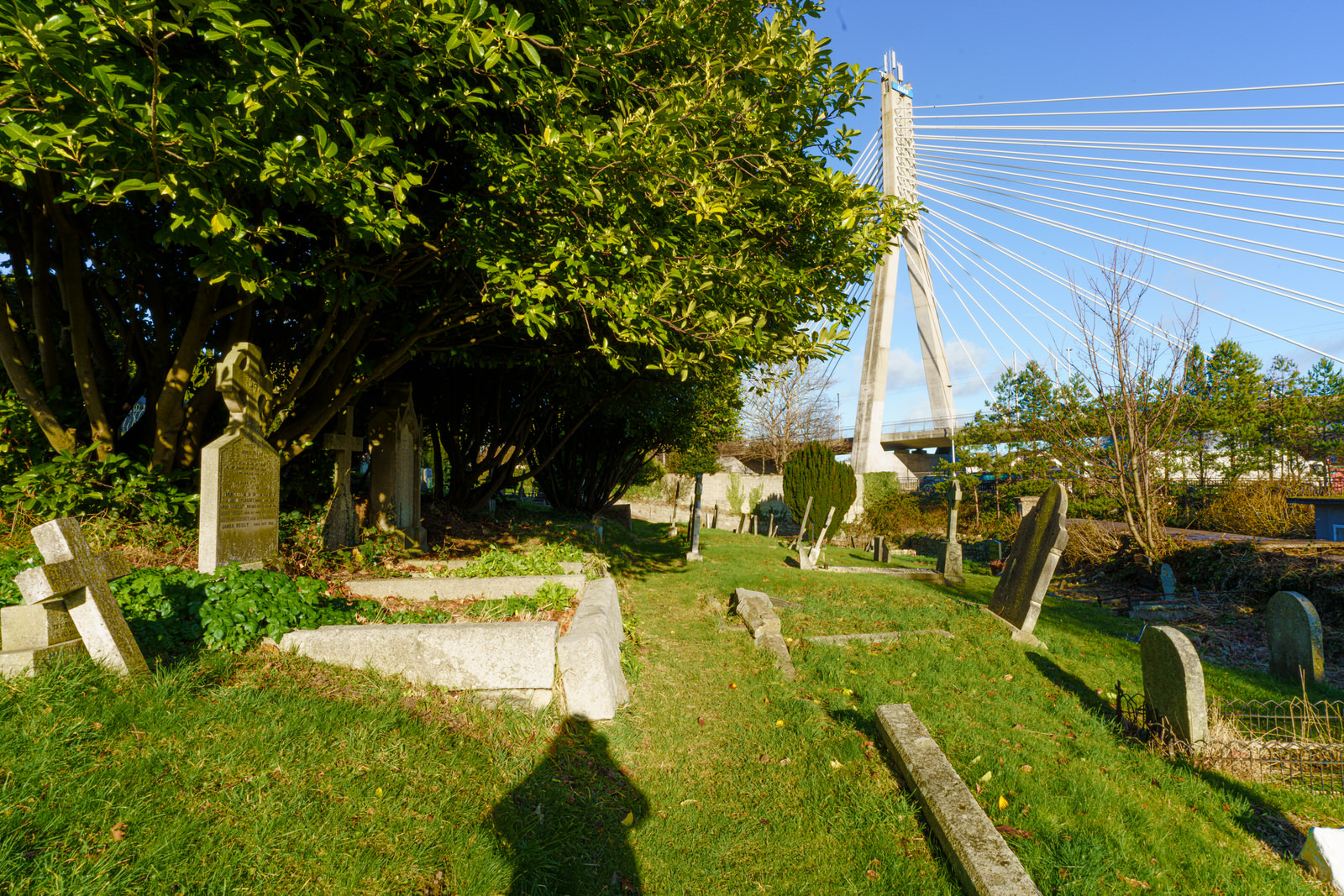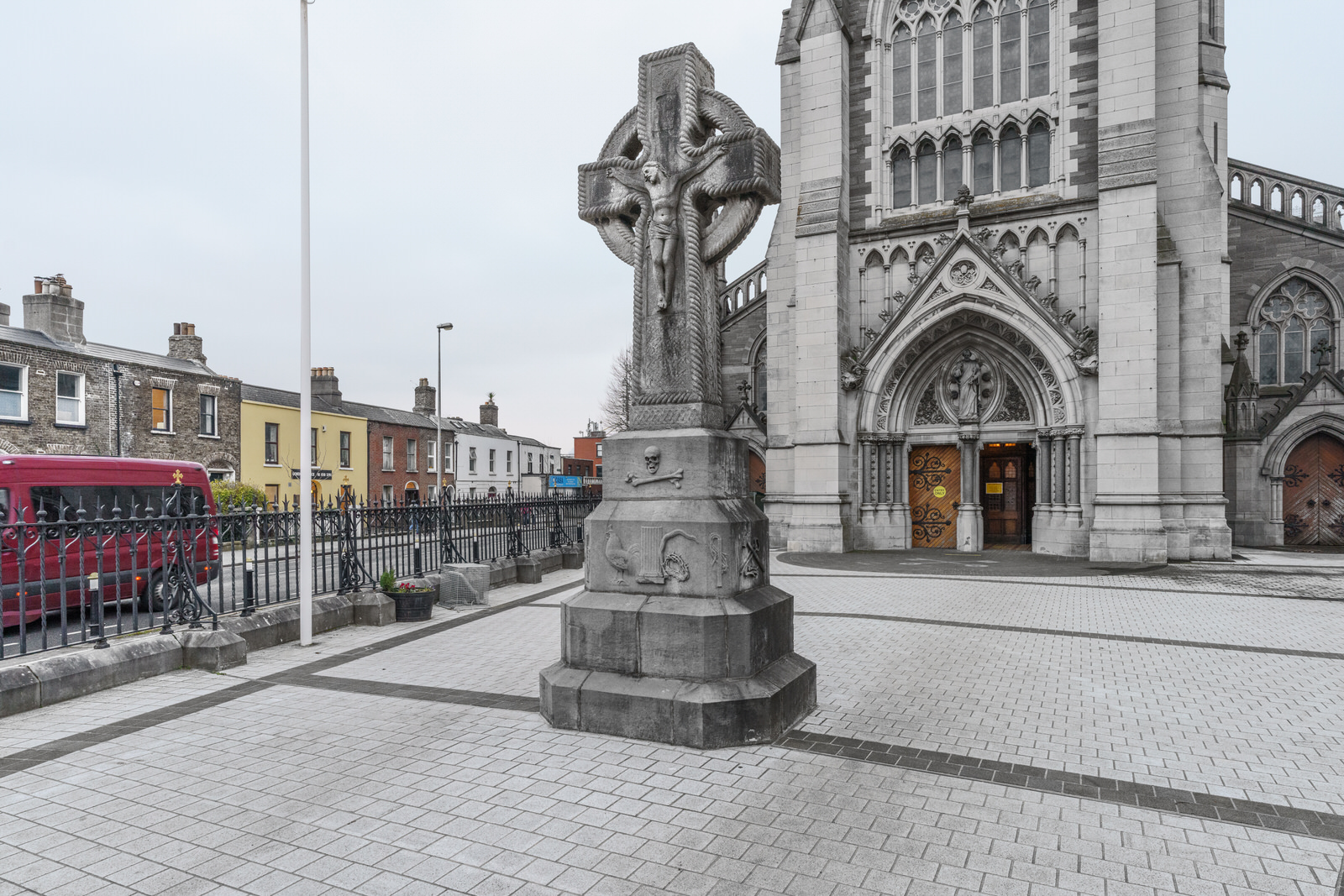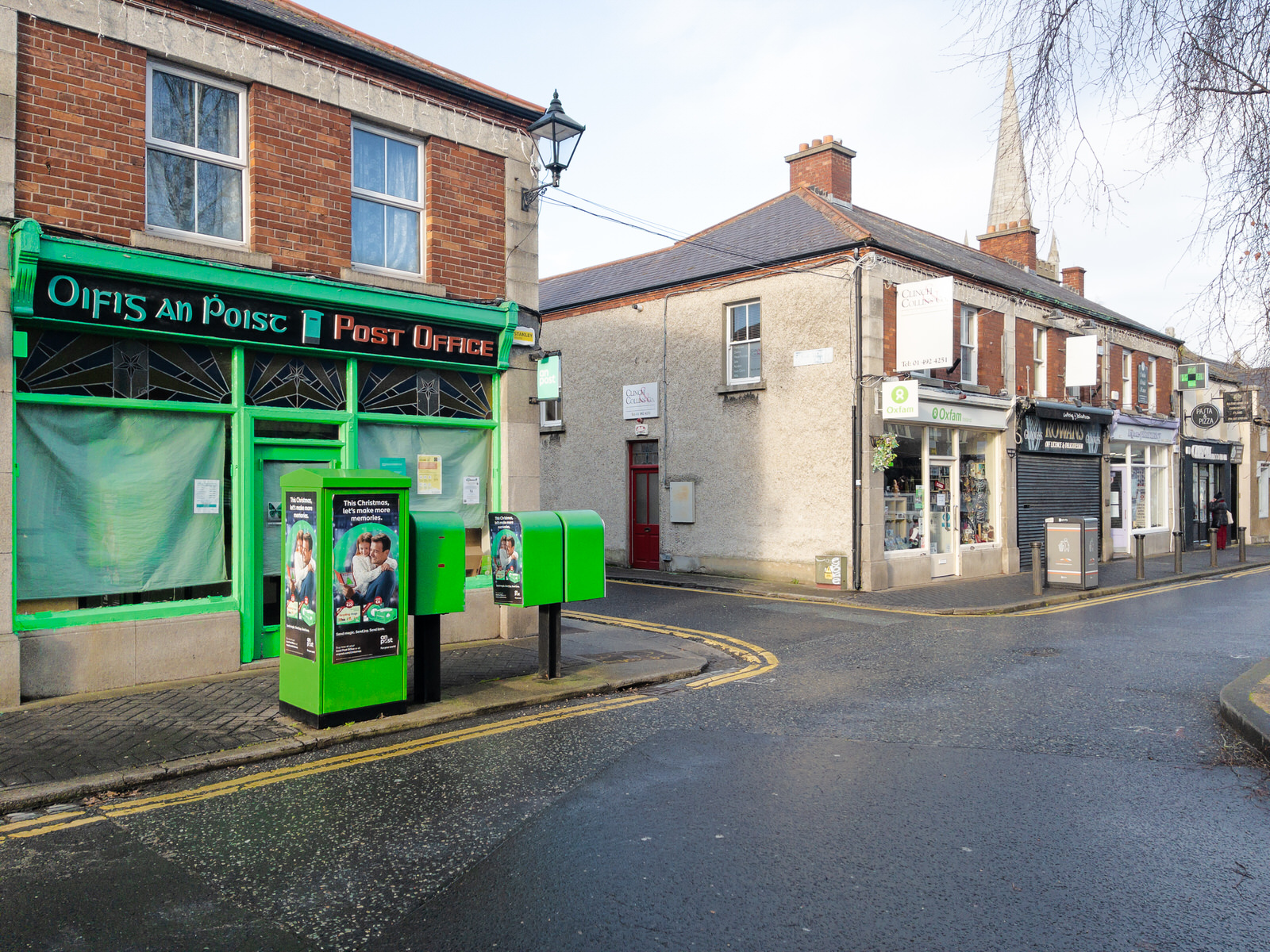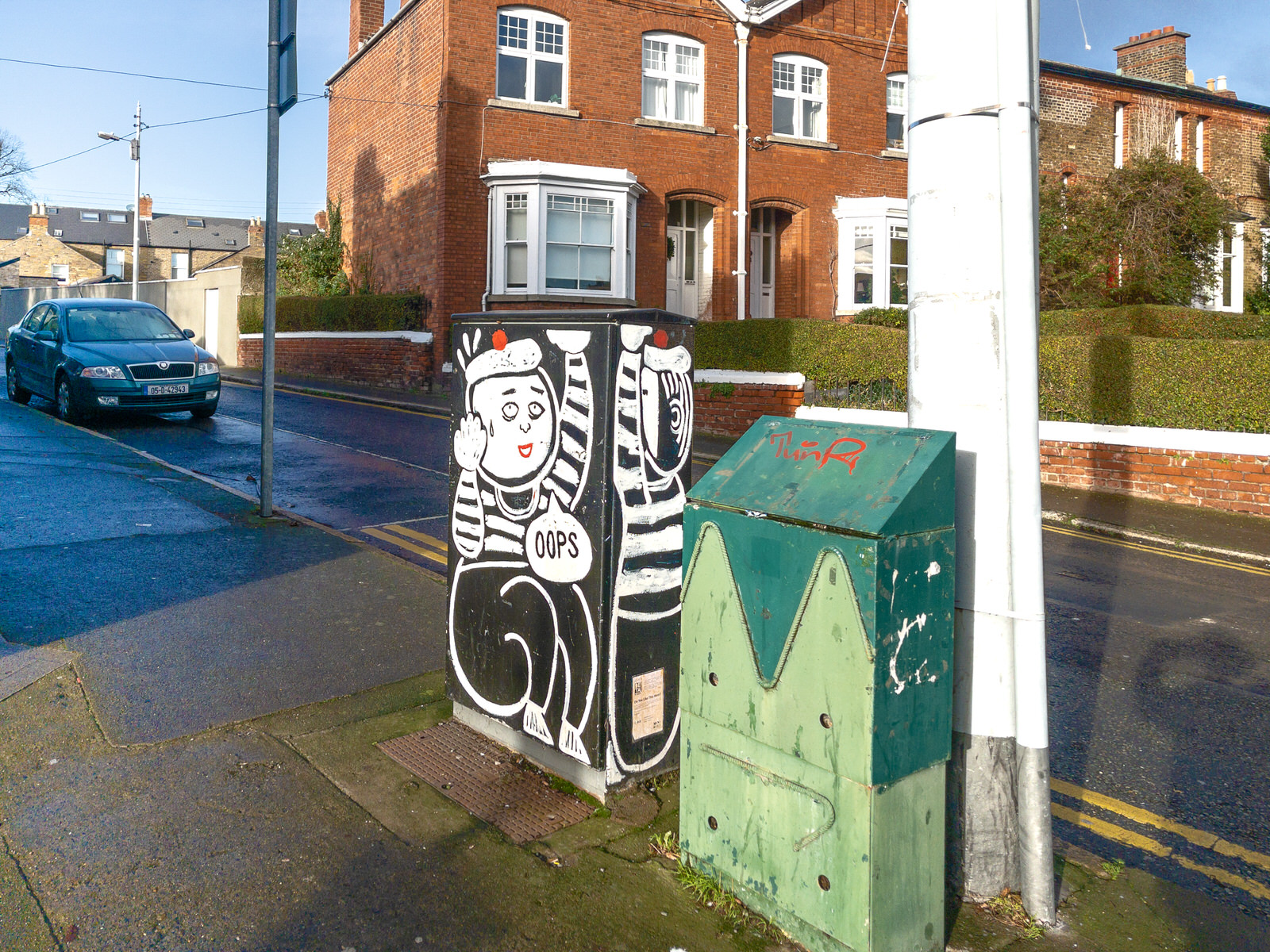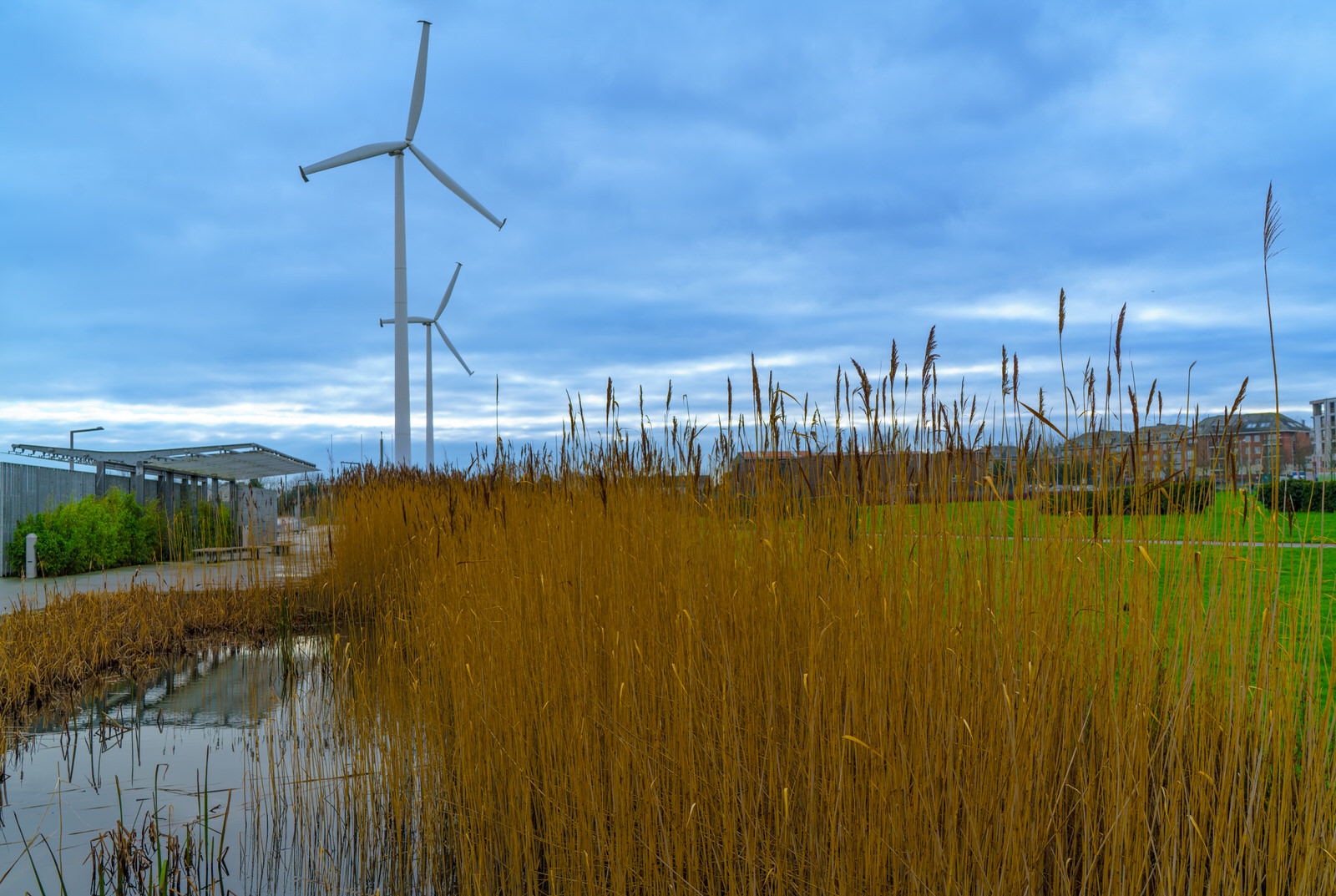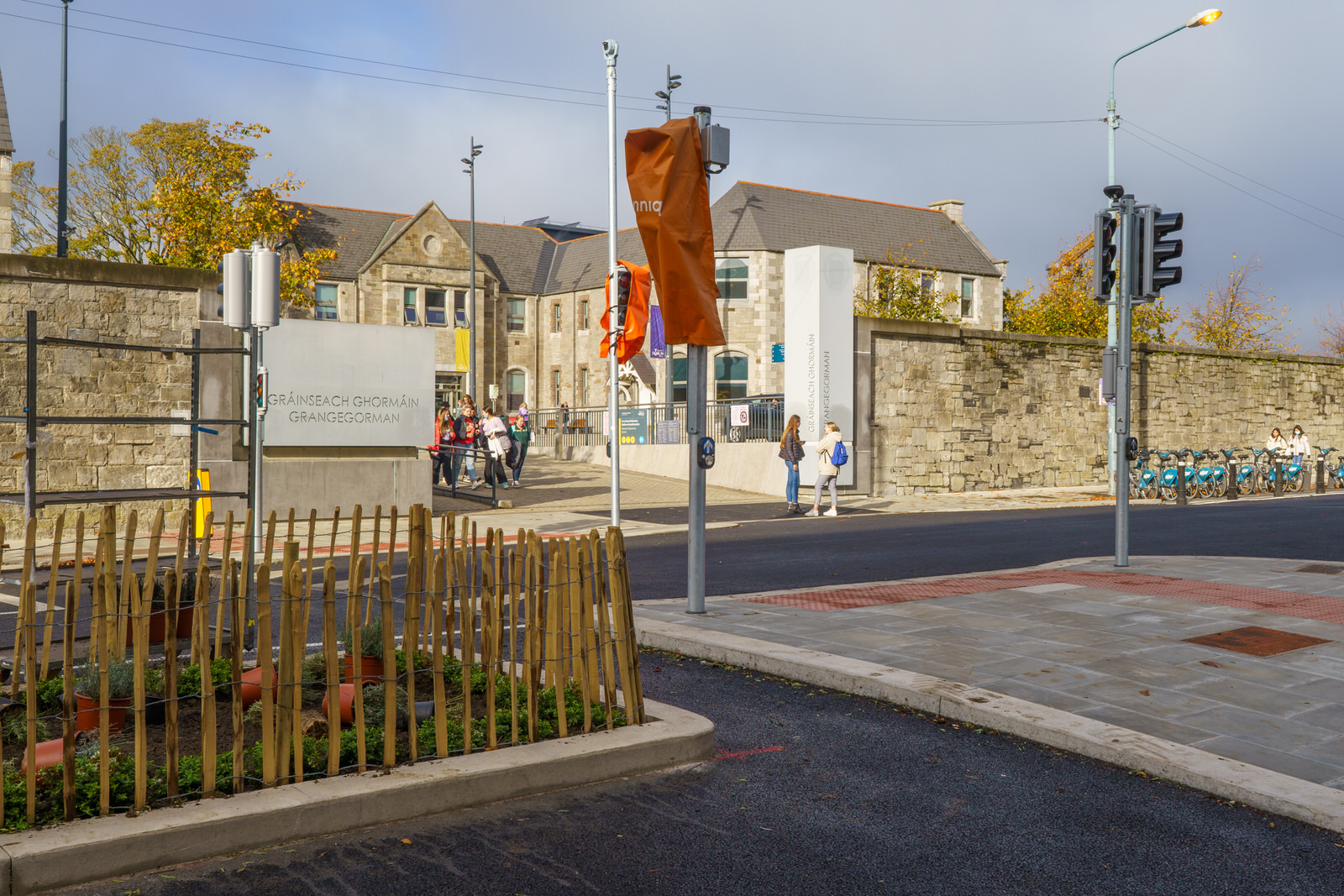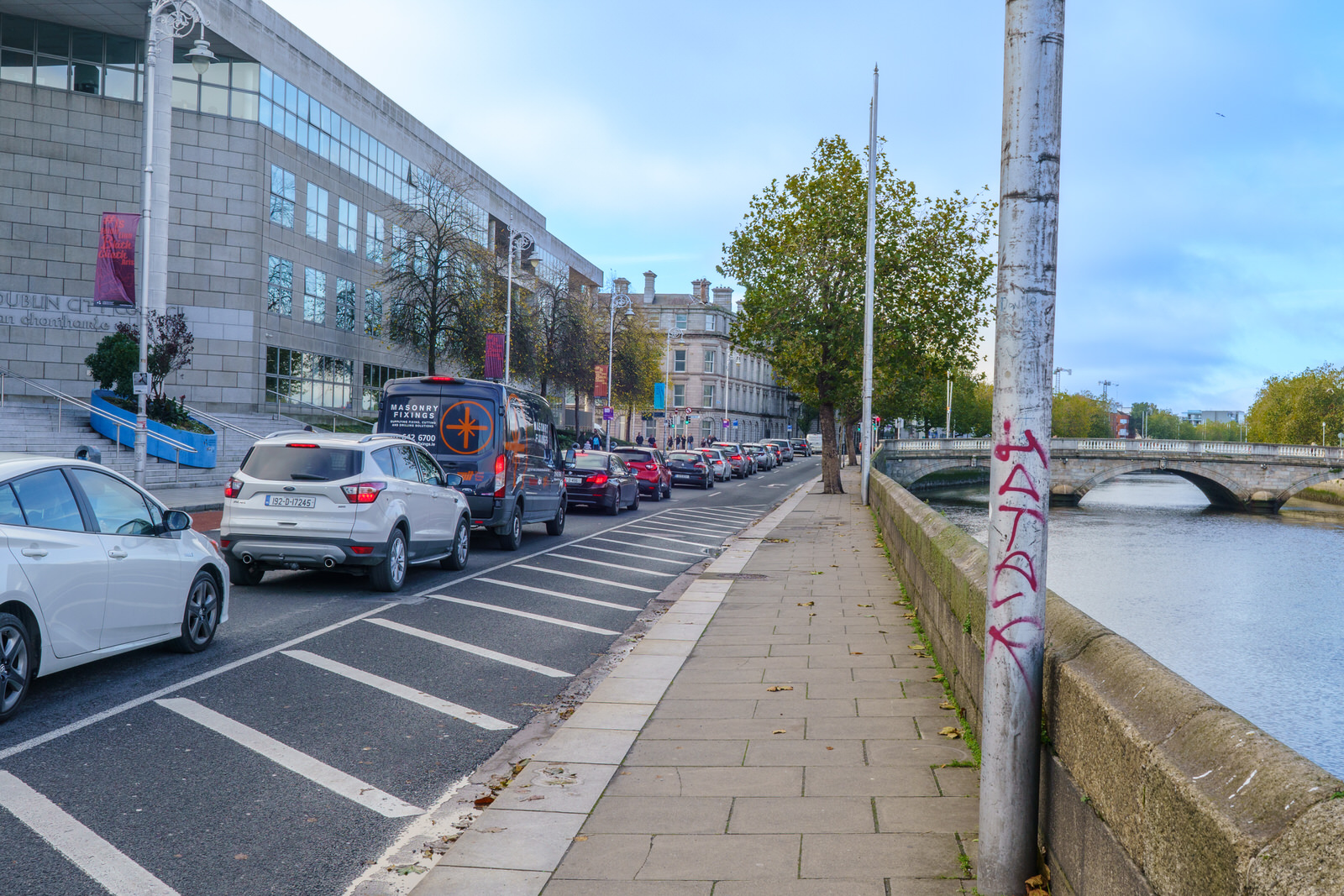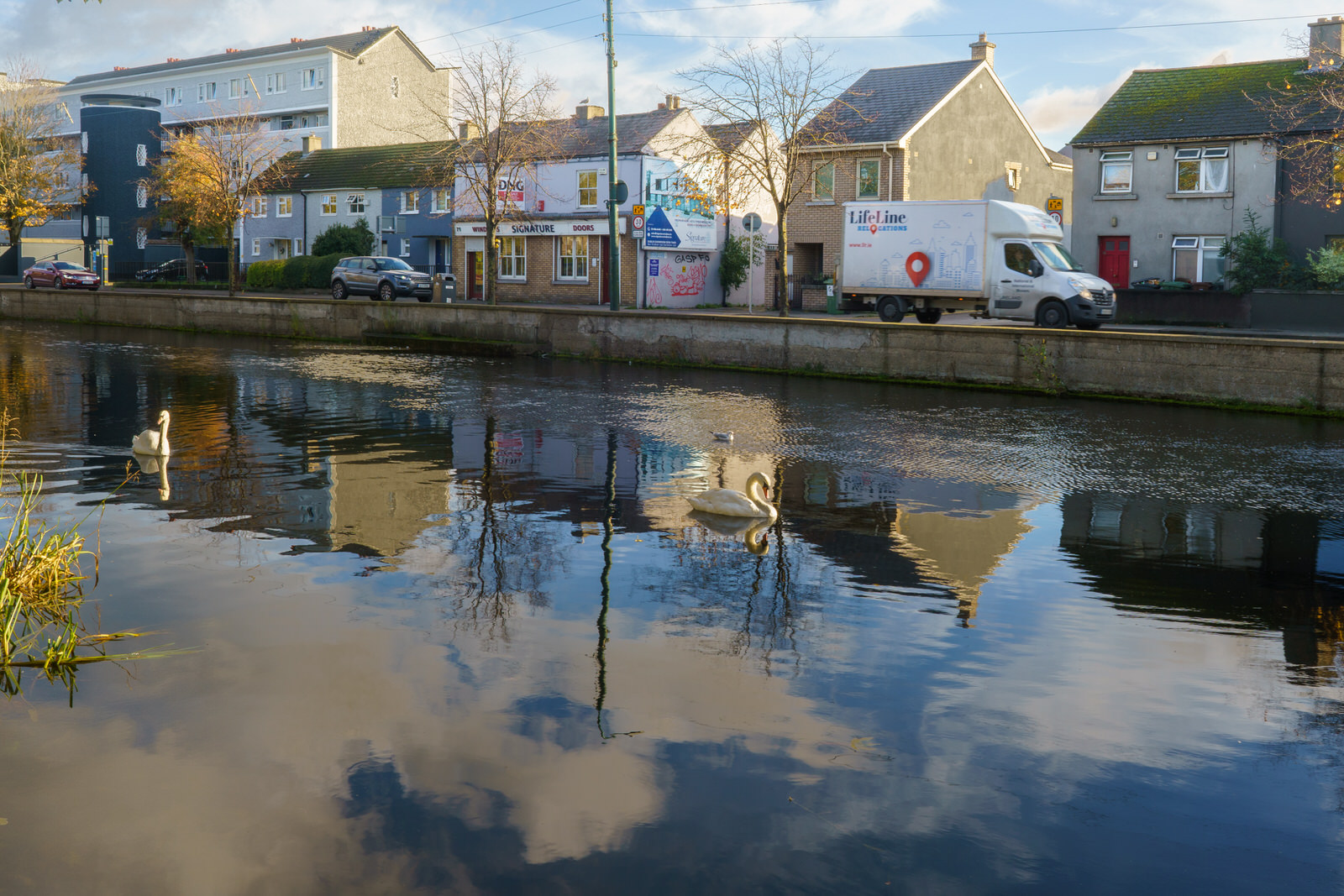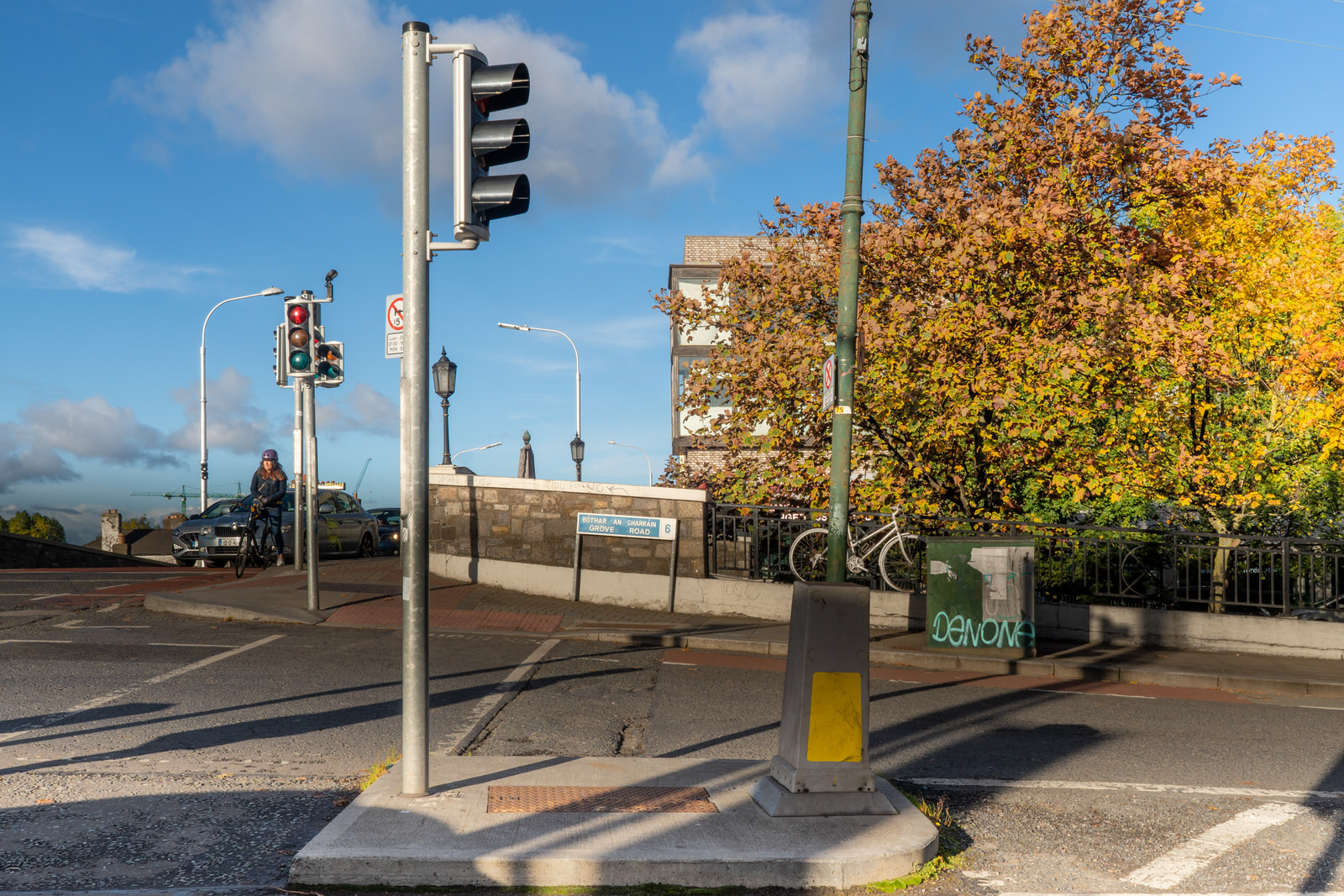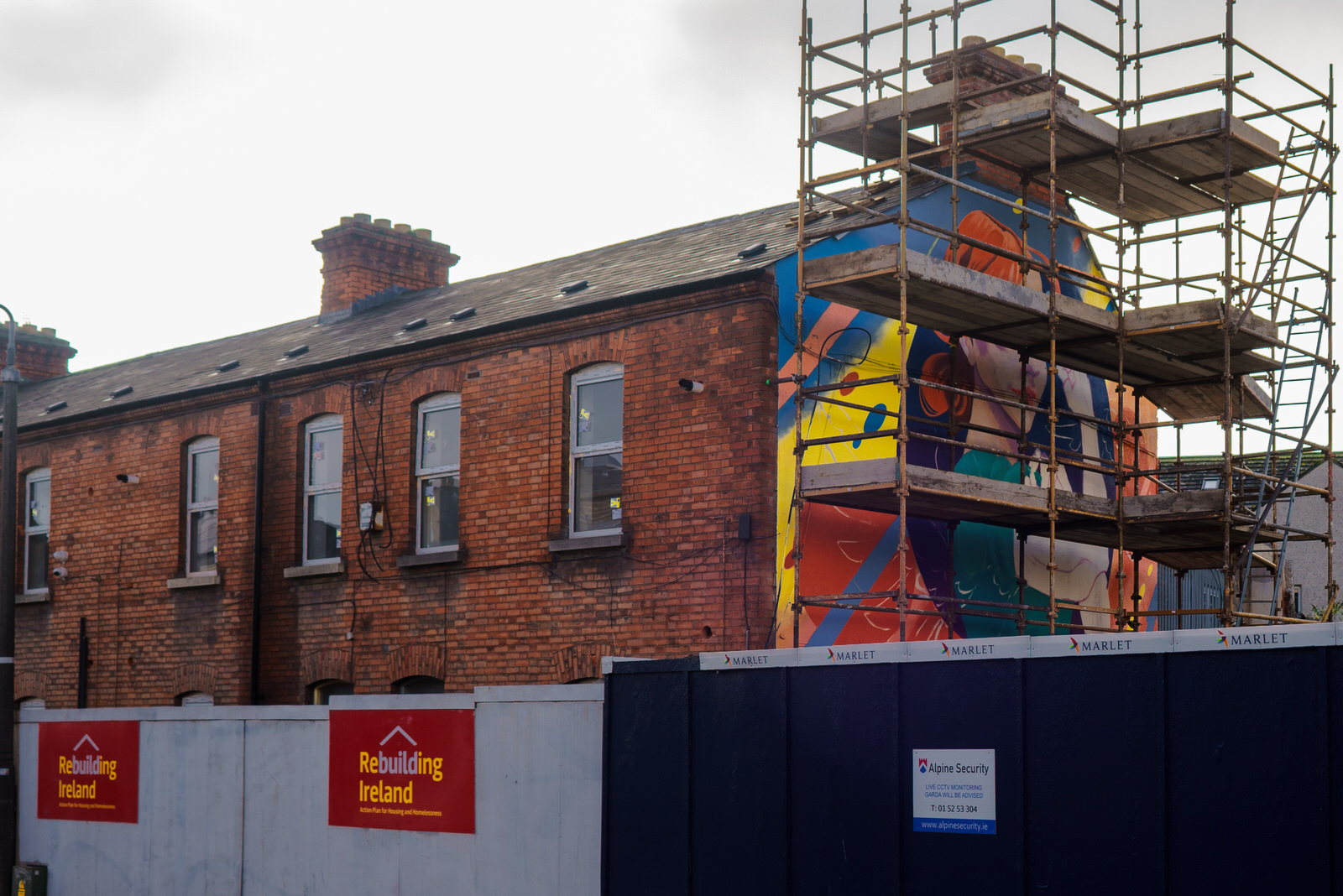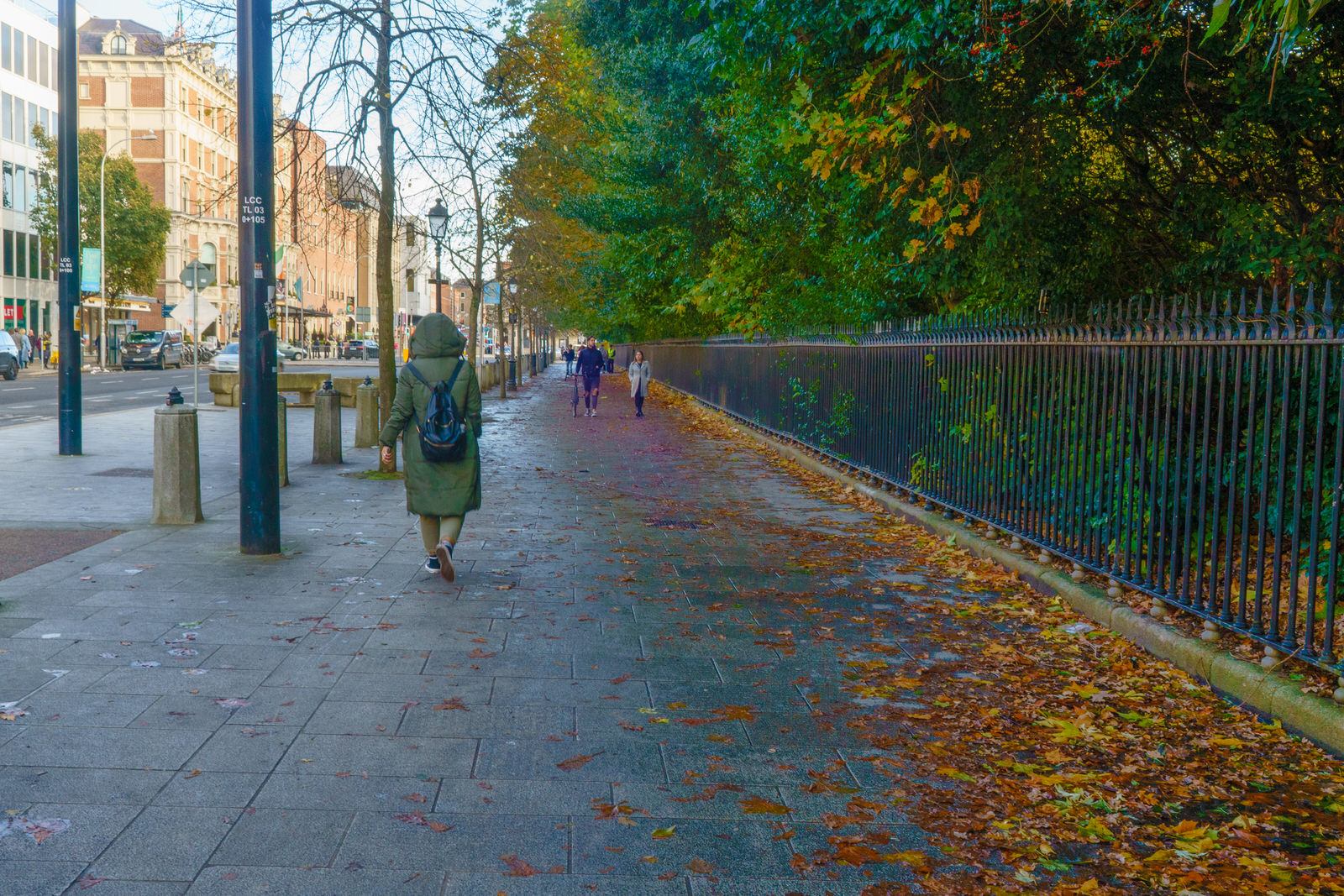AREAS OF DUBLININCLUDING TOWNS AND VILLAGES
NEWMARKET AREA OF DUBLIN18 MARCH 2022
TEMPLE BARDUBLIN CITY CENTRE
Temple Bar (Irish: Barra an Teampaill) is an area on the south bank of the River Liffey in central Dublin, Ireland. The area is bounded by the Liffey to the north, Dame Street to the south, Westmoreland Street to the east and Fishamble Street to the west. It is promoted as Dublin's 'cultural quarter' and, as a centre of Dublin's city centre's nightlife, is a tourist destination.
KILMAINHAMAREAS OF DUBLIN
Kilmainham is an inner suburb of Dublin, Ireland, south of the River Liffey and west of the city centre. It is in the city's D08 postal district. The area was once known as Kilmanum.
In the Viking era, the monastery was home to the first Norse base (longphort) in Ireland.
In the 12th century, the lands on the banks of the Liffey were granted to the Knights Hospitaller. Strongbow erected for them a castle about 2 kilometres or 1 mile distant from the Danish wall of old Dublin; and Hugh Tyrrel, first Baron Castleknock, granted them part of the lands which now form the Phoenix Park. The Knights of St. John of Jerusalem remained in possession of the land until the dissolution of the monasteries in the 16th century.
Until the time of Queen Elizabeth, when Dublin Castle became the centre of English power, the Lord Lieutenants often held court at the manor of Kilmainham. In 1559, Thomas Radclyffe, 3rd Earl of Sussex, on being again appointed Lord Lieutenant, found that the building at Kilmainham had been damaged by a storm, and had to hold court at the palace of St. Sepulchre. The following year Elizabeth ordered that Dublin Castle be upgraded to enable the Lord Lieutenant to reside there, and Kilmainham fell out of favour.
The Manor of Kilmainham formed a liberty outside the jurisdiction of the city of Dublin, with its own rights and privileges. The manor took in parts of James's Street and side-streets and stretched as far as Lucan and Chapelizod. After the Reformation, former lords (or chairmen, as they were later called) of this manor included Lord Cloncurry and Sir Edward Newenham. John "Bully" Egan, from Charleville, County Cork, was chairman from 1790 to 1800. These manorial rights were abolished after the Municipal Corporations (Ireland) Act 1840, and much of the area was included within the city.
The portion still outside the city in the latter part of the nineteenth century was within the township of New Kilmainham, a municipality governed by town commissioners, first under the Towns Improvement (Ireland) Act 1854 and then under an 1868 local act. From 1868, New Kilmainham comprised the townlands of Kilmainham, Goldenbridge North, Inchicore North, Inchicore South, and Butchers Arms. Its total area was 580 acres (230 ha) and the population was 5,391 in 1881 and 6,519 in 1891. In 1900 the township was absorbed into the municipal boundary of Dublin city as the New Kilmainham ward.
The area is best known for Royal Hospital Kilmainham, constructed on the site where the Knights of St. John of Jerusalem had their priory in Dublin. It now houses the Irish Museum of Modern Art. Nearby is Kilmainham Gaol, where the executions of the leaders of the Easter Rising took place.
Kilmainham holds one of a small number of Viking era burial sites (Old Norse haugr meaning barrow or mound), within Dublin, others including Bully's Acre and where College Green is now located.
CRUMLINAREAS OF DUBLIN
On the 9th February 2022 I explored much of the Crumlin area of Dublin in order to select suitable locations to photograph in detail at a later date and I took the opportunity to photograph some examples of what I refer to as "Paint-A-Box Streetart".
KIMMAGEAREAS OF DUBLIN
Kimmage (Irish: Camaigh or Camaigh uisce, meaning "crooked water-meadow", possibly referring to the meandering course of the River Poddle),is a suburb on the south side of Dublin in Ireland.
Kimmage is to the south of Dublin city centre, outside the ring of canals, but before the M50 ring motorway or the Dublin mountains. It is surrounded by Crumlin, Greenhills, Harold's Cross, Rathfarnham, Templeogue and Terenure. Kimmage is divided between postal districts Dublin 12 and Dublin 6W.
The KCR, or Kimmage Cross Roads, is a landmark in Kimmage. The crossroads are considered, by some, to denote the southern boundary with Terenure, intersecting Terenure Road West, Kimmage Road West, Fortfield Road and the Lower Kimmage Road. The KCR is also the location of a petrol station and a convenience shop built in the 1960s.
The KCR Pub is located close to the KCR. The Stone Boat, named for the feature which separated the Poddle from the City Watercourse, is also a local bar and lounge. The Four Provinces (formerly the Black Horse Inn) on Ravensdale Park was opened in 2019 by the local microbrewery Four Provinces Brew Company. The main shopping area is Kimmage village on the Lower Kimmage Road. The SuperValu shopping centre on Sundrive Road has 12 shops.
At one side of the area is Kimmage Manor, the former location of The Holy Ghost Fathers College which prepared priests for the religious life, later hosting the Kimmage Development Studies Centre. Kimmage Manor Church parish church is on its grounds, and the main building holds the provincial office of the Spiritan order.
Larkfield, an old mill and farm in Kimmage owned by the family of Joseph Plunkett, was used as a clearing station for arms imported in the 1914 Howth gun-running for use in the 1916 Easter Rising. An Irish Volunteers secret camp, the Kimmage Garrison, was established by Plunkett and his brother George Oliver Plunkett. IRB members with engineering skills came from England and Scotland and lived rough for three months while they manufactured bombs, bayonets and pikes for the coming Easter Rising on the site that is now the SuperValu shopping centre.
On Easter Monday, 1916, Captain George Plunkett waved down a tram with his revolver at Harold's Cross, ordered on his volunteers armed with shotguns, pikes and homemade bombs, took out his wallet and said "Fifty-two tuppenny tickets to the city centre please". The group went to Liberty Hall before being organised into four companies, and with the other volunteers, marched to seize the General Post Office.
In the late 1940s and early 1950s, the park facing the end of Stannaway Road was known locally as the 'Tip'. The Tip had a water-filled quarry which froze over in the winter. In one tragic incident, three children drowned when they fell through thin ice and died.
The Poddle fed the millrace at the end of the pond in the grounds of the nearby monastery of Mount Argus. In the 1950s and 1960s, this two-storey building housed St Gabriel's Boys Club, which was well supported by the local community when they staged Gilbert and Sullivan operettas.
The residential area between Ferns Road and Kildare Road was architecturally designed in the shape of a Celtic Cross, with a mirror image each side of Armagh Road. Locally this road was considered as dividing Crumlin and Kimmage. The majority of these roads were named after mediaeval monasteries such as Clonmacnoise, Clonard, Kells and Monasterboice. Stannaway Road originally ran from Sundrive Road, up to and just beyond Cashel Road, where the scheme ended with a wall across the roadway that was demolished in the 1940s/1950s when an extension to the original scheme commenced. Blarney Park also had a similar wall separating the Dublin Corporation houses from a private scheme. In the 1950s, residents in the Corporation houses objected to being cut off and broke a hole through. The hole was gradually made larger and the Corporation deemed the wall unsafe and eventually demolished it. Access through the private section then became the norm. The Corporation devised a privatisation policy in the 1970s and sold council homes to the existing tenants. Captain's Road (previously Captain's Lane) runs from the top of Windmill Road in Crumlin to Kimmage Road. There were only a few houses between the schools (St Columcille CBS and the girls' convent opposite) on Armagh Road and St Agnes Church.
CHURCHTOWN AREAS OF DUBLIN
The Mount Carmel Nursing home is located at Braemor Park. The former private maternity hospital in Churchtown, south Dublin, which was purchased by the HSE for €11m, has been redeveloped to provide a range of short-stay, traditional care, assessment and rehabilitation beds.
The former Fetherstonhaugh Hall building is now The Church of Ireland Theological Institute (formerly the Church of Ireland Theological College) is a land mark building at Braemor Park.
The Church of Ireland Theological Institute is responsible for ministerial formation and lay training within the Church of Ireland. It is located at Braemor Park.
Traditionally Church of Ireland clergy were trained for the priesthood by attending Trinity College Dublin, studying at the divinity school. In 1873, following the Irish University Bill, Trinity officially became a non-denominational university. While most Penal Laws had by that time been abolished, and the Church of Ireland had been disestablished in 1871, nevertheless, the University Bill continued the practice of anti-Catholicism in requiring professors of theology to be Anglicans. In 1911 an arrangement was formalised by which the House of Bishops and the college board governed the divinity school. In 1913 the "Divinity Hostel" was set up in two buildings in Mountjoy Square, Dublin.
In 1969, the Church of Ireland Library was moved to the site of the Divinity Hostel, a number of other archives of Church of Ireland organisations are held here.
Over the years as the Church of Ireland bishops' presence in the governance of Trinity diminished (where before 1980 as members of the board of the divinity school, the bishops could nominated the professors of theology), the divinity school at Trinity has been effectively replaced by the non-denominational School of Religious Studies and Theology.
In 1980 the Church of Ireland Theological College was set up in the Divinity Hostel, which had moved to Rathgar in 1964. In 2007 Church of Ireland clerical training was reconstituted into the current institute.
Following a report commissioned by the bishops and proposals to the synod (which were accepted), the institute was formed in 2007 out of the Church of Ireland Theological College to modernize the training of Church of Ireland clergy and other people for lay ministry. The Revd Maurice Elliot was appointed the director of the institute succeeding Rev Dr Adrian Empey who was principal of the college from 2001. Rev. James Hartin served as principal from 1980 to 1989 and Rev. Canon Professor John R Bartlet had served as principal from 1989 until 2001.
DUNDRUMTOWNS AND VILLAGES OF DUBLIN
In 1971, Dundrum was one of the earliest places in Ireland to open a purpose-built shopping centre (the first being in Stillorgan). A much bigger shopping centre opened just south of Dundrum on 3 March 2005. Known as Dundrum Town Centre it contains within the complex one of the largest cinemas in Ireland, opened in early October 2005. The plans for the old shopping centre includes space for hotels, apartments and more retail outlets. However this has been postponed and the older retail units have been leased to new tenants such as Lidl, Classic Furniture, Mulvey's of Dundrum. Recently the old Dundrum Shopping Centre has been rebranded Dundrum Village Centre.
PHIBSBOROALSO SPELLED AS PHIBSBOROUGH
The name "Phibsborough" comes from "Phipps" or "Phibbs." This is believed to relate to the Lincolnshire settler Richard Phibbs of Coote’s Horse, resident in Kilmainham from the mid-17th century. The spelling being cited as Phippsborough in 1792.
ATTRACTIVE POST OFFICE RATHFARNHAM VILLAGE
Today I surprised myself when I discovered that I was in Rathfarnham Village. I must admit that I had thought that the area surrounding the Yellow House Pub was Rathfarnham Village.
I was in Bushy Park and left it via the new pedestrian bridge bridge which lead to Dodder View Road. I looked up and noticed a church tower at the top of the hill across the road and as I did not know what church it was I decided to investigate. I walked up Church Lane only to arrive at the main street in Rathfarnham, a street that I have never visited before.
TERENUREAREAS OF DUBLIN PHOTOGRAPHED BY INFOMATIQUE
Terenure originally called Roundtown, is a suburb of Dublin in Ireland.
Terenure is a suburb of Dublin, primarily in the administrative area of Dublin City Council but with parts falling in South Dublin. It is located south of Harold's Cross and north of Rathfarnham, and also borders the suburbs of Templeogue, Rathgar, Kimmage and Perrystown.
CLONGRIFFIN PHOTOGRAPHED JANUARY 2016
I visited on a very wet windy day, in January 2016, but the windmills were locked-down ... maybe the weather was unsuitable. Back then I used a Sony A7RII and a Sony FE35 35mm F1.4 lens.
The name Clongriffin is a modern invention, a concatenation of "clon", the anglicisation of cluain (the Irish language word for meadow), and griffin. A griffin, griffon, or gryphon (the Irish of which is ghrífín) is a mythical beast and may be an element in the name of the adjacent district, Balgriffin.
GRANGEGORMANINCLUDING THE UNIVERSITY CAMPUS
Grangegorman is an inner suburb on the northside of Dublin city, Ireland. The area is administered by Dublin City Council. It was best known for decades as the location of St Brendan's Hospital, which was the main psychiatric hospital serving the greater Dublin region. As of 2020, the area is the subject of a major redevelopment plan, running for more than a decade, under the aegis of the Grangegorman Development Agency, including the new Technological University Dublin campus.
THE QUAYS OF DUBLINON THE RIVER LIFFEY
The Dublin quays refers to the two roadways and quays that run along the north and south banks of the River Liffey in Dublin, Ireland. The stretches of the two continuous streets have several different names. However, all but three of the names (Swift's Row, Bachelors Walk and Usher's Island) share the same "Quay" designation. The quays have played an important part in Dublin's history.
Much of the southern roadway and about half of the northern roadway is part of the R148 road while the other half of the northern roadway is part of the R801 road.
Both roadways run approximately 4.3 km (2.7 mi) from Sean Heuston Bridge in the west. The eastern end of the north roadway is at East-Link Bridge while the south roadway turns southward at the Grand Canal. Seventeen bridges cross the river along the line of The Quays; three of them are exclusively pedestrian bridges, one a railway bridge, one other for Luas trams (with another planned) and pedestrians, and the remainder for vehicular and pedestrian use.
The name designations of the north roadway are (from west to east): Wolfe Tone Quay, Sarsfield Quay, Ellis Quay, Arran Quay, Inns Quay, Upper Ormond Quay, Lower Ormond Quay, Bachelors Walk, Eden Quay, Custom House Quay and North Wall Quay.
The name designations of the south roadway are (from west to east): Victoria Quay, Usher's Island, Usher's Quay, Merchant's Quay, Wood Quay, Essex Quay, Wellington Quay, Crampton Quay, Aston Quay, Burgh Quay, George's Quay, City Quay, Sir John Rogerson's Quay and Britain Quay.
PORTOBELLO AREABY WILLIAM MURPHY
HAROLD'S CROSS AREAPHOTOGRAPHED BY WILLIAM MURPHY
Harold's Cross is an urban village and inner suburb on the south side of Dublin, Ireland. The River Poddle runs through it, though largely in an underground culvert, and it holds both a major cemetery, Mount Jerome, and Our Lady's Hospice.
Harold's Cross is situated north of Terenure and Rathgar, west of Rathmines, east of Crumlin and Kimmage, and directly south from the Grand Canal at Clanbrassil Street. It lies within the jurisdiction of Dublin City Council, and straddles the boundary of Dublin 6, Dublin 6W and Dublin 12 postal districts.
STONEYBATTER AREA OF DUBLINBY WILLIAM MURPHY
Commercial DisclosurePLEASE NOTE THAT LINKS BELOW MAY REDIRECT YOU TO THE AMAZON LOCATION MOST LIKELY TO SHIP TO YOUR ADDRESS
You will find links to buy products from Amazon, Google and other partners. If you click on these links, you’ll find that the URL includes a small extra piece of text which identifies that the click came from my websites. This text is an affiliate code, and it means that I get a small percentage of the money you spend if you choose to buy that product, or, in some cases, other products from the site soon after. These affiliate links help pay the costs of producing my websites and ensure that the content is free to you.

Zeiss Batis 85mm f/1.8 Lens for Sony E Mount, Black
I HAVE THIS AND THE 135mm LENS
VERSATILE FULL-FRAME LENS: The powerful lens for the mirrorless full-frame system of Sony fulfills the highest requirements. Despite its compact design, the image meets the expectations of professional photographers. EXCELLENT RESOLUTION AND HIGH CONTRAST: Richly saturated and vivid colours are a must in the creation of lasting impressions. However, stray light within an optical system leads to a lightening of the image that is particularly noticeable in the shadows. This reduces image contrast, with the result that exposures lack contrast and appear faded. To avoid this, ZEISS combines various specially developed technologies to reduce the undesirable effects of stray light. ROBUST AND WEATHERPROOF METAL CONSTRUCTION: Thanks to features that are designed to keep out dust and spray water, the lens is perfectly suited for critical outdoor conditions. It is also designed for many years of intensive use. SMOOTH AND RELIABLE AUTOFOCUS: The design of the autofocus system requires an extremely accurate shifting of particular lens groups. The focusing system of ZEISS lenses is designed to ensure a robust and smooth-running autofocus mechanism with the best imaging performance.
YOU SHOULD ALSO CONSIDER THE 25mm LENS
